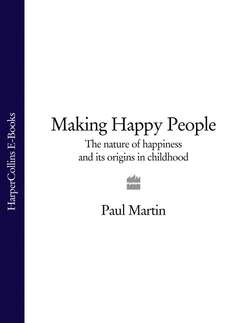Читать книгу Making Happy People: The nature of happiness and its origins in childhood - Paul Martin - Страница 26
7. A sense of purpose and meaning
ОглавлениеA life that is meaningful and has some purpose to it is more likely to be a happy life. Someone who is swept along by the tide may still be reasonably happy, but someone who knows where they want to go, and why, will probably be happier. Studies have confirmed that people who regard their life as meaningful tend to be happier and more satisfied, other things being equal. Their health benefits too: Japanese researchers have discovered that elderly people who have a strong sense that their lives are meaningful (a concept known in Japanese as ikigai) live significantly longer on average than those whose lives lack meaning.
A sense of purpose and meaning can come from many different sources, including family life, career, study, creative activities, politics, religion or voluntary work. Many parents derive a considerable sense of purpose and meaning from parenthood. What these pursuits all have in common is providing long-term goals. According to research, individuals whose daily efforts relate directly to achieving their longer-term goals tend to be happier than those whose strivings are unrelated to their life goals.
Personal goals give a sense of meaning and purpose to the grind of daily life. But they must be realistic and attainable. Having goals or aspirations that exceed what can realistically be achieved is a recipe for unhappiness. When children are young, their parents and teachers usually set their goals for them, and getting the balance right can be tricky. Children need to be stretched so that they can learn and develop, but if the bar is set too high they will experience mostly failure, and their motivation and self-esteem may wilt. If on the other hand the bar is set too low, children may not be sufficiently stimulated and therefore fail to realise their potential. You can only set the bar at the right height if you know the child’s individual capabilities and limitations.
